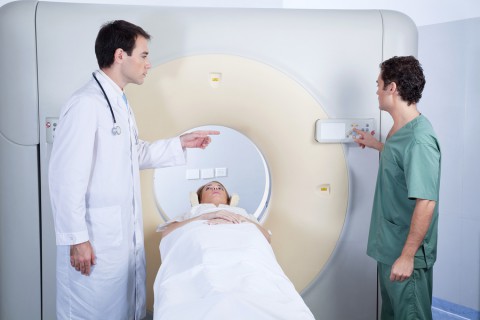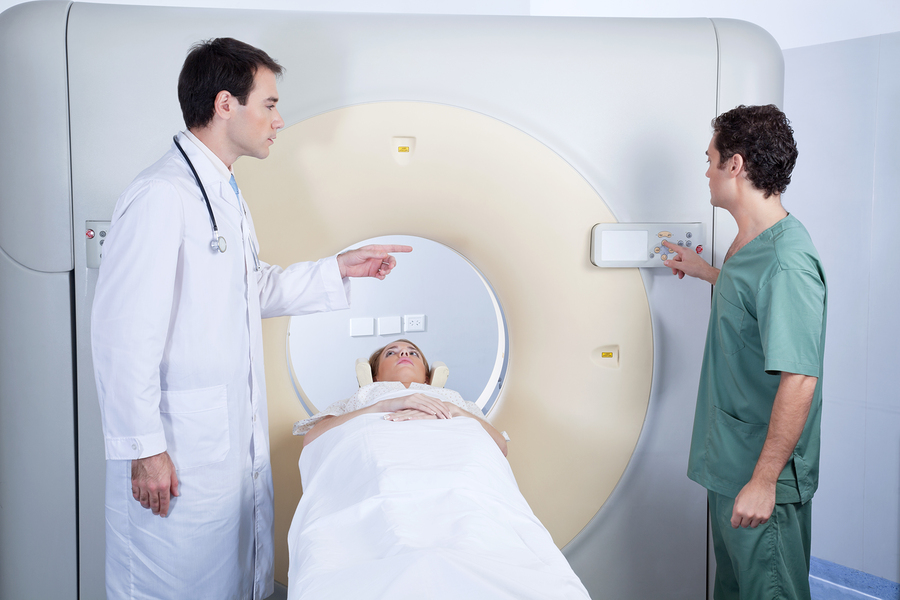 Radiologic technologists assist radiologists in the use of general radiology, computed tomography (CT), magnetic resonance imaging (MRI) and ultrasound. Technologists operate the equipment that produces the images and explain the procedures to patients (and get them to cooperate throughout the procedure) so that the clearest images may be obtained.
Radiologic technologists assist radiologists in the use of general radiology, computed tomography (CT), magnetic resonance imaging (MRI) and ultrasound. Technologists operate the equipment that produces the images and explain the procedures to patients (and get them to cooperate throughout the procedure) so that the clearest images may be obtained.
Duties
Technologists are responsible for moving imaging equipment and getting it into the right position as well as adjusting controls and settings. They help prevent unnecessary exposure to radiation by using protective devices like lead shields, while limiting the size of the X-ray beam.
They may also be responsible for operating mobile X-ray equipment so images can be obtained in the operating room, emergency room or even at a patient’s bedside.
Work Environment
Radiologic technologists typically work in hospital settings, private practices and in long-term care facilities. They may also work in mobile X-ray vans that travel throughout the community. In general, they spend a lot of time on their feet, so physical stamina is often necessary.
Technologists average a 40-hour work week, however, there may be times when evening and weekend hours are required. Depending on the facility, part-time positions and shift work may also be available.
Career Path
With additional training, radiologic technologists may become specialists and perform CT scanning, MRIs and angiography, which is a procedure that X-rays blood vessels to find blood clots. These healthcare professionals can advance to become a radiologist assistant with additional education and certification.
Through practical experience, technologists may be promoted to chief technologist, supervisor and department director. Some professionals may advance by specializing in the occupation to become instructors in radiologic technology programs, while others can obtain jobs as sales reps with equipment manufacturers.
Education and Training
Radiologic technologists are required to undergo two years of formal training – or two to four years of training in an academic environment – which can lead to certification, an associate’s degree or a bachelor’s degree. Additional training typically offers a career working exclusively with specialized radiographic equipment.
Technologists are certified by the American Registry of Radiologic Technologists and must complete Continuing Education (CE) credits to remain registered.
Job Outlook
According to the U.S. Bureau of Labor Statistics, employment for radiologic technologists is expected to increase 15% by the year 2016, faster than the national average for all other occupations. The projected job growth is a direct response to an aging population that will likely have a greater demand for diagnostic imaging. Though hospitals may remain the main employer of technologists, a number of new jobs are expected to be created in physicians’ offices and diagnostic imaging centers.
Salary
Median annual earnings of radiologic technologists working in a hospital environment in 2014 were $58,030. The salary for those working in a physician’s office was $53,560, while professionals working in a skilled nursing facility earned a slightly higher average pay, making $64,750.
While a radiologist is the physician who reads the X-rays or scans, they require the services of a skilled radiologic technologist. Accurate diagnostic imaging starts with the technologist and for this reason, they are a critical professional in the healthcare industry.









